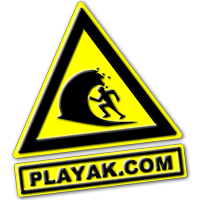[please login to make this ad block disappear]
|
Welcome,
Guest
|
TOPIC:
Functional Kayaking Exercises 18 years 10 months ago #12758
|
|
Please Log in or Create an account to join the conversation. |
Re:Functional Kayaking Exercises 18 years 10 months ago #12762
|
|
Please Log in or Create an account to join the conversation. |
Re:Functional Kayaking Exercises 18 years 10 months ago #12773
|
|
Please Log in or Create an account to join the conversation. |
Re:Functional Kayaking Exercises 18 years 10 months ago #12774
|
|
Please Log in or Create an account to join the conversation. |
Re:Functional Kayaking Exercises 18 years 10 months ago #12781
|
Please Log in or Create an account to join the conversation. |
Re:Functional Kayaking Exercises 18 years 10 months ago #12790
|
Please Log in or Create an account to join the conversation. |
Re:Functional Kayaking Exercises 18 years 10 months ago #12799
|
|
Please Log in or Create an account to join the conversation. |
Re:Functional Kayaking Exercises 18 years 10 months ago #12803
|
|
Please Log in or Create an account to join the conversation. |
Re:Functional Kayaking Exercises 18 years 10 months ago #12804
|
|
Please Log in or Create an account to join the conversation. |
Re:Functional Kayaking Exercises 18 years 10 months ago #12824
|
Please Log in or Create an account to join the conversation. |
Re:Functional Kayaking Exercises 18 years 10 months ago #12825
|
|
Please Log in or Create an account to join the conversation. |
Re:Functional Kayaking Exercises 18 years 10 months ago #12826
|
Please Log in or Create an account to join the conversation. |
Re:Functional Kayaking Exercises 18 years 10 months ago #12836
|
|
Please Log in or Create an account to join the conversation. |
Re:Functional Kayaking Exercises 18 years 10 months ago #12840
|
Please Log in or Create an account to join the conversation. |
Re:Functional Kayaking Exercises 18 years 10 months ago #12847
|
|
Please Log in or Create an account to join the conversation. |
Re:Functional Kayaking Exercises 18 years 10 months ago #12909
|
|
Please Log in or Create an account to join the conversation. |
Re:Functional Kayaking Exercises 18 years 10 months ago #12913
|
|
Please Log in or Create an account to join the conversation. |
Re:Functional Kayaking Exercises 18 years 10 months ago #12945
|
|
Please Log in or Create an account to join the conversation. |
Re:Functional Kayaking Exercises 18 years 10 months ago #12979
|
Please Log in or Create an account to join the conversation. |
Re:Functional Kayaking Exercises 18 years 10 months ago #12983
|
|
Please Log in or Create an account to join the conversation. |
Re:Functional Kayaking Exercises 18 years 10 months ago #12986
|
Please Log in or Create an account to join the conversation. |
Re:Functional Kayaking Exercises 18 years 10 months ago #13000
|
|
Please Log in or Create an account to join the conversation. |


